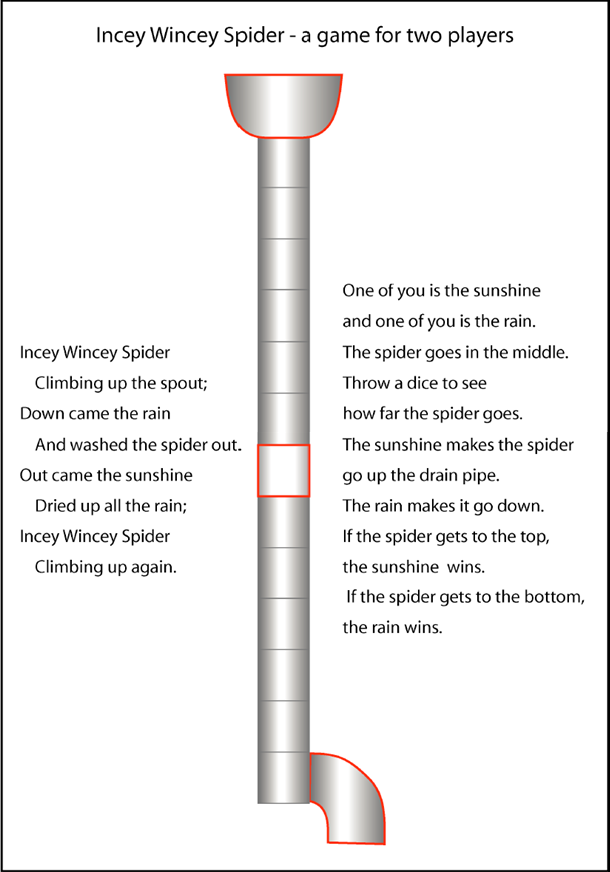Or search by topic
Number and algebra
Geometry and measure
Probability and statistics
Working mathematically
Advanced mathematics
For younger learners
Incey Wincey Spider




This is a game for two players. To play, you'll need two dice, a paper version of the drainpipe (in colour or black and white) and a counter to be the spider.
Start by playing with one dice.
Decide who is the sunshine and who is the rain. Take it in turns to throw the dice and move the spider that number of spaces up (sunshine) or down (rain).
If the spider gets right to the top of the pipe, sunshine wins. If it gets to the bottom, rain wins.
Next, try a more interesting version of the game. This time, use two dice. In this game, the player must land exactly on the end of the drain pipe to win. For each turn decide which dice number to use.
You could make up your own version of the game, and perhaps send in your ideas to us so that other children can try them out. What makes the game good to play?
Teacher resources for this activity can be found here.
Printable NRICH Roadshow resource and spider counters: Spider1.pdf or Spider2.pdf
You may also like
Adding with the Abacus
Nowadays the calculator is very familiar to many of us. What did people do to save time working out more difficult problems before the calculator existed?
Jumping Squares
In this problem it is not the squares that jump, you do the jumping! The idea is to go round the track in as few jumps as possible.
All Change
There are three versions of this challenge. The idea is to change the colour of all the spots on the grid. Can you do it in fewer throws of the dice?

